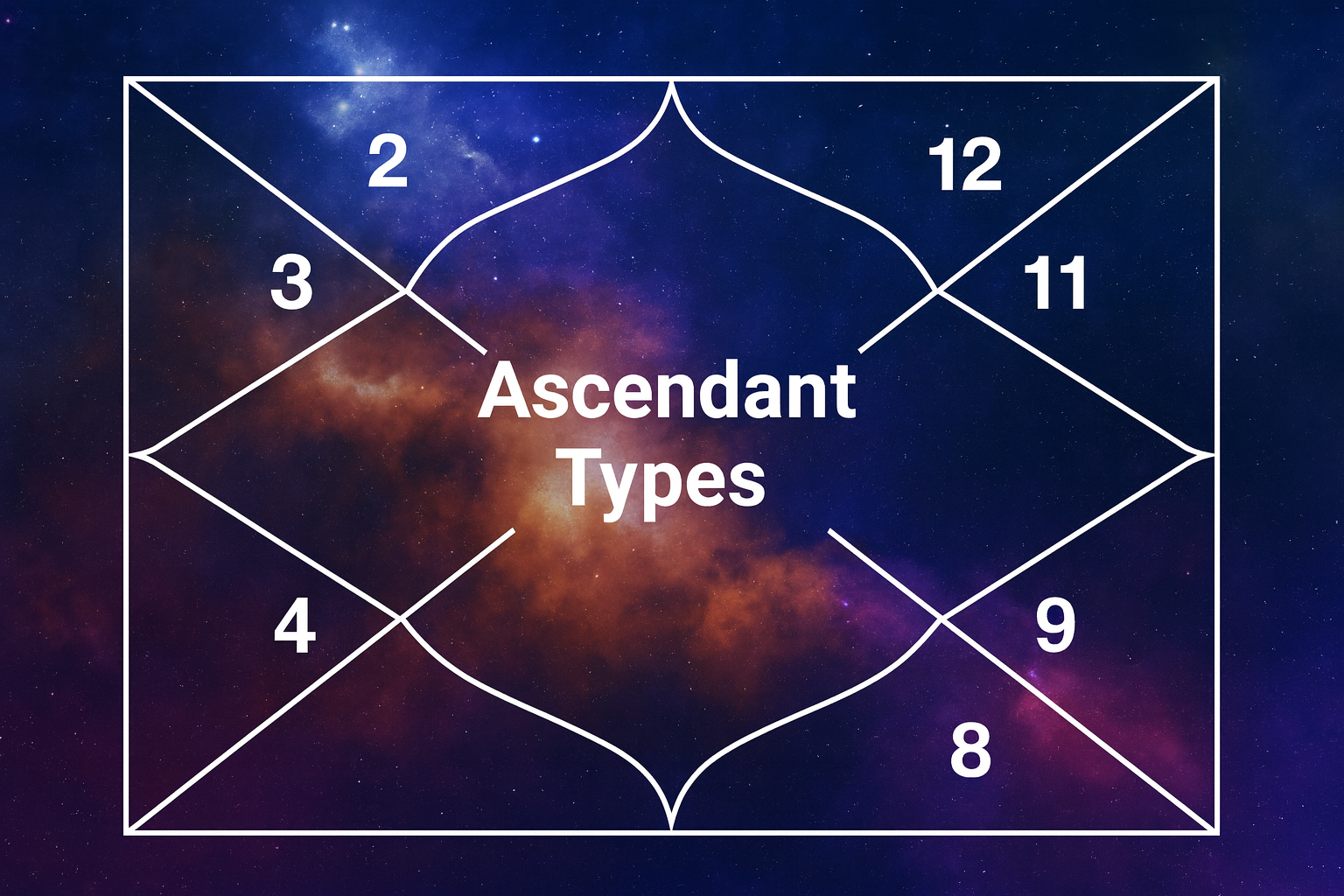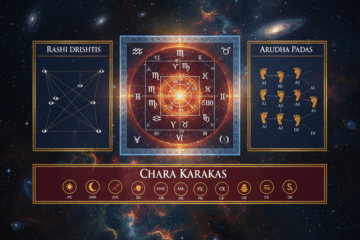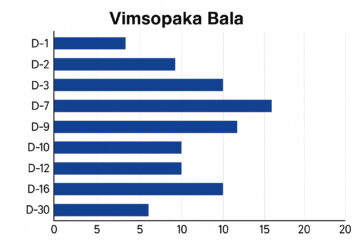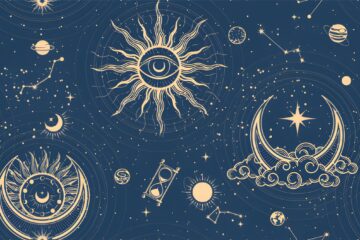One of the first real questions every serious student asks is this: Which Lagna to use in Vedic astrology when you’re actually trying to predict something? Do you read from the Ascendant, from Moon Lagna, from Arudha Lagna, or from the Mahadasha lord’s sign? Different teachers give different answers. That’s normal. You’re not doing anything wrong by being confused.
This is not a minor technicality. Choosing which Lagna to use in Vedic astrology changes which houses you activate, which yogas you consider valid, and which areas of life you say are “about to happen.” If you choose the wrong frame, you overpromise. If you choose the right frame, the chart stops sounding mystical and starts sounding precise.
Here’s the core principle: the more specific the Lagna, the more individualized its results. The Rising Sign (your Ascendant in the D1 chart) shifts roughly every two hours. Moon Lagna changes every ~2.5 days. Sun Lagna changes monthly. So the Ascendant is the most personal anchor. It is the foundation. You always start there before you branch to any other reference Lagna.
But astrology is multi-layered. The body, the mind, the public image, the soul’s intention — they do not always narrate the same story at the same time. Each Lagna highlights one of these layers. The real skill is not picking only one Lagna forever. The real skill is watching for repetition across them. When two or three Lagnas all say the same thing, that outcome is karmically confirmed.
Why “Which Lagna to Use in Vedic Astrology?” Is a Real Question
Because life is not one-dimensional. You have a physical storyline (what actually happens), an emotional storyline (how you feel about it), a social storyline (how others see it), and a spiritual storyline (what it means for your evolution). No single Lagna can cover all of that.
So when you ask which Lagna to use in Vedic astrology, what you’re really asking is: “Which layer am I trying to read right now — body, mind, reputation, timing, or soul agenda?” Once you know the layer, you know which Lagna to prioritize in that moment.
Moon Lagna vs Ascendant: Which Lagna to Use in Vedic Astrology for Prediction
Classical Jyotish, including Parashara, repeatedly tells you to read from both the Ascendant (the true Rising Sign) and the Moon Lagna. That’s not poetry — that’s instruction. Let’s see why.
1. Ascendant / Rising Lagna (Physical Lagna)
This is always first. The Ascendant in the D1 chart describes the physical body, health, visible storyline, and basic destiny pattern. It tells you how karma tries to manifest in concrete reality. When you judge wealth yogas, marriage potential, career structure, long-term health sensitivity — you start here. This Lagna also defines functional benefics and functional malefics: which planets become helpful or difficult based on rulership from this exact rising sign. That functional nature matters more than generic “good planet / bad planet.”
In other words: if you’re asking which Lagna to use in Vedic astrology to judge tangible events (marriage, job change, relocation, surgery), the answer is: start from the Ascendant.
2. Moon Lagna (Mind and Emotional Reality)
Moon Lagna is the sign of the Moon treated as the first house. It shows how life feels from the inside. The same event can register as blessing or breakdown depending on the Moon. When you’re reading transits (gochara), especially emotional pressure windows, Moon Lagna is non-negotiable.
Sade Sati, for example, is Saturn moving over the Moon Lagna region (12th, 1st, 2nd from Moon). That describes psychological restructuring: responsibility, isolation, maturity. It is not guaranteed external disaster. It’s internal weight. So when the question is “How will the native mentally live through this phase?” you switch to Moon Lagna to interpret it.
Summary so far: Ascendant = outer storyline. Moon Lagna = inner experience. You need both to speak like a human, not a prediction bot.
The Other Major Lagnas and Why They Matter
Instead of memorizing a random list, understand what each Lagna is trying to measure. That answers which Lagna to use in Vedic astrology in any specific situation.
1. Sun Lagna
Take the Sun’s sign as Lagna. This reflects dharma, ego development, dignity, leadership impulse, and how you are meant to stand in the world. It’s less about daily events and more about “What am I becoming?” Many modern astrologers quietly reference Sun Lagna — especially with the D10 (Dashamsha) — for career authority and recognition potential.
2. Arudha Lagna (AL)
Arudha Lagna shows how the world perceives you. It’s your projection field, your brand, your visible status. This is reputation, desirability, credibility, the social mirage around you. If you want to know whether something will be obvious to others — scandal, fame, respect — you read Arudha Lagna. This is where “Arudha Lagna meaning” becomes practical: it’s the Lagna of public visibility.
3. Karakamsa Lagna
Find your Atmakaraka (planet with highest degree in the natal chart). Place it in the Navamsa. That Navamsa sign is your Karakamsa Lagna. When you re-lay that Lagna onto the birth chart, it shows soul inclination, liberation themes, spiritual desire, talents that feel sacred. This is where you ask, “What is this incarnation trying to evolve toward?” It’s incredibly important for purpose work.
4. Jeeva Lagna
In some classical and Nadi traditions, Jeeva Lagna is associated with the life-force significator (often Jupiter for men, Venus for women). This Lagna describes aliveness, intimacy capacity, relationship fulfillment, inner contentment. It tells you, “Do I feel nourished by this life?” Jeeva Lagna is powerful in relationship readings because it explains why someone who “has everything” can still feel empty — or why someone with simple circumstances radiates satisfaction.
5. Pucca Lagna
Pucca Lagna is the sign where your Ascendant lord sits in the D1 chart. Example: if Leo rises and the Sun (Leo’s lord) is in Taurus, Taurus becomes the Pucca Lagna. Pucca Lagna shows where you stabilize, where your personal identity finds ground and acts with confidence. It often describes the true base of operations you fall back into over time.
6. Dasha Lagna
During any Mahadasha, you treat the sign of the Mahadasha lord as a temporary Lagna. You then read houses from there. This tells you which areas of life are “on stage” during that chapter. This is a timing weapon. Dasha proposes the storyline. Transits dispose — they decide when that storyline becomes visible.
7. Stellium Sign
If a single sign in your chart holds three or more planets, treat that sign like a pseudo-Lagna. It has gravitational pull. Whether or not it’s technically the Ascendant, life keeps circling back to that sign’s topics.
8. Naam Lagna
Naam Lagna (name-based Lagna) links the first sound of the native’s name to a sign. It’s mainly used when exact birth time is unreliable. It’s not the first choice for high-precision timing, but it gives psychological and functional hints when the birth time is questionable.
The Repetition Principle: Confirmation Through Multiple Lagnas
This is how you stop guessing. If you’re wondering which Lagna to use in Vedic astrology for a confident prediction, the honest answer is: use several, and look for repetition.
Example: Jupiter forms a Raja Yoga from the Ascendant. From Moon Lagna, Jupiter again supports the 9th/10th houses. From Arudha Lagna, Jupiter boosts prestige and public perception. Now check the current Mahadasha: if Jupiter is the Mahadasha lord, then the Dasha Lagna is Jupiter’s sign, and that sign activates career houses again. At that point you’re not looking at “maybe.” You’re looking at karmic confirmation. Inner narrative, outer reality, public image, and timing are all aligned.
The more a theme repeats across Lagnas, the more baked-in it becomes. The fewer repetitions, the more conditional it is. This is how you speak with confidence without slipping into superstition or fearmongering.
How to Work With Multiple Lagnas in Practice
You are not supposed to judge all twelve possible reference points in every conversation. You’ll drown. Here’s a clean, usable hierarchy for live reading — basically how to answer “which Lagna to use in Vedic astrology” without freezing:
- Ascendant (Rising Lagna): Physical storyline, functional benefics/malefics, concrete life structures, health, marriage, career direction.
- Moon Lagna: Emotional processing, mood, anxiety, coping, subjective experience of the same period. Essential for Sade Sati and transit stress windows.
- Arudha Lagna: Public perception, reputation, visibility. Will this be seen, praised, judged, exposed?
- Dasha Lagna: Timing focus. Which houses are lit up right now in this Mahadasha?
- Karakamsa / Jeeva Lagna: Spiritual motive and fulfillment. “Does this feel aligned with who I am becoming?”
If two or more of these give the same answer, that’s when you speak clearly. If they contradict each other, you speak gently and say, “This outcome is possible, but not guaranteed unless timing reinforces it.” That honesty is part of ethical astrology.
Important Notes
Which Lagna has the highest priority?
The D1 Ascendant always comes first. It sets the rulership grid, defines functional benefics and functional malefics, and shows the concrete baseline of your incarnation. No alternate Lagna can erase it.
What makes the Moon Lagna so important?
The Moon Lagna shows your internal experience — mood, fear, longing, pride, loneliness, relief. Prediction isn’t just “will you get married,” it’s also “will that phase feel nourishing or heavy?” Moon Lagna answers that. It’s also crucial for transit work, especially with Saturn, Rahu, and Ketu.
What role does Arudha Lagna play in prediction?
Arudha Lagna is public image. It shows how karma becomes visible to others: respect, scandal, praise, status, desirability. If the chart promises success but Arudha Lagna is weak, the success may stay private. If Arudha is strong, the same yoga becomes public and undeniable.
Can a secondary Lagna override the primary Lagna?
No. Secondary Lagnas (Moon, Arudha, Karakamsa, Jeeva, Dasha Lagna) refine, emphasize, or time what the Ascendant already implies. They are lenses, not replacements. We are not choosing one winner. We are layering perspectives.
What happens when the same combination repeats across multiple Lagnas?
That’s when you trust it. Repetition is karmic confirmation. If career activation shows from Ascendant, from Moon Lagna (confidence + desire), from Arudha Lagna (public visibility), and the Dasha Lagna is also lighting up the 10th house — that’s not “maybe.” That’s a chapter of life.
FAQ
Why do some astrologers only use Moon Lagna, while others insist on Rising Lagna?
Because they’re answering different questions. Rising Lagna = outer events and structure. Moon Lagna = inner experience and emotional processing. Both are valid. Mature readers use both, not one.
Is the Sun Lagna useful or just pop astrology?
It’s useful. Sun Lagna speaks to dharma, self-respect, integrity, and how your ego learns to stand in the world. It becomes especially meaningful when you analyze career dignity and leadership themes, often alongside the D10 chart.
How is Jeeva Lagna different from Arudha Lagna?
Jeeva Lagna reflects inner vitality and fulfillment — “Do I feel alive in this connection, in this job, in this city?” Arudha Lagna reflects what others think you are — “You look so successful,” “You’re admired,” “You’re controversial.” Inner nourishment versus public projection. Both matter.
Can multiple Lagnas be used to predict the same event?
Yes, and that’s actually ideal. For marriage, for example: Ascendant shows 7th house promises, Moon Lagna shows emotional readiness, Arudha Lagna shows public status of the union. If all three align under supportive dashas and transits, probability skyrockets.
Which Lagna should I prioritize in a Mahadasha reading?
During any Mahadasha, treat the Mahadasha lord’s sign as Dasha Lagna. Read houses from there to see what areas of life are “on stage” in that period. Then watch Saturn, Jupiter, Rahu, and Ketu transits to see when those areas activate outwardly. Dasha proposes. Transit disposes.
Keep Studying with Much Needed Astro
If you feel overwhelmed by all these reference points — Ascendant, Moon Lagna, Arudha Lagna, Dasha Lagna, Karakamsa, Jeeva Lagna — that’s normal. Jyotish is supposed to feel layered. You are literally studying how different dimensions of karma express themselves through one lifetime.
Much Needed Astro exists to teach you that without superstition and without fear tactics. We read charts like adults: functional benefic vs functional malefic from the Ascendant, dignity and combustion, Navamsa strength, timing through dashas and transits, and repetition across multiple Lagnas. If you’re serious about learning real Jyotish, stay with Much Needed Astro — practical, lineage-respecting astrology so you can stop guessing and start reading with confidence.



